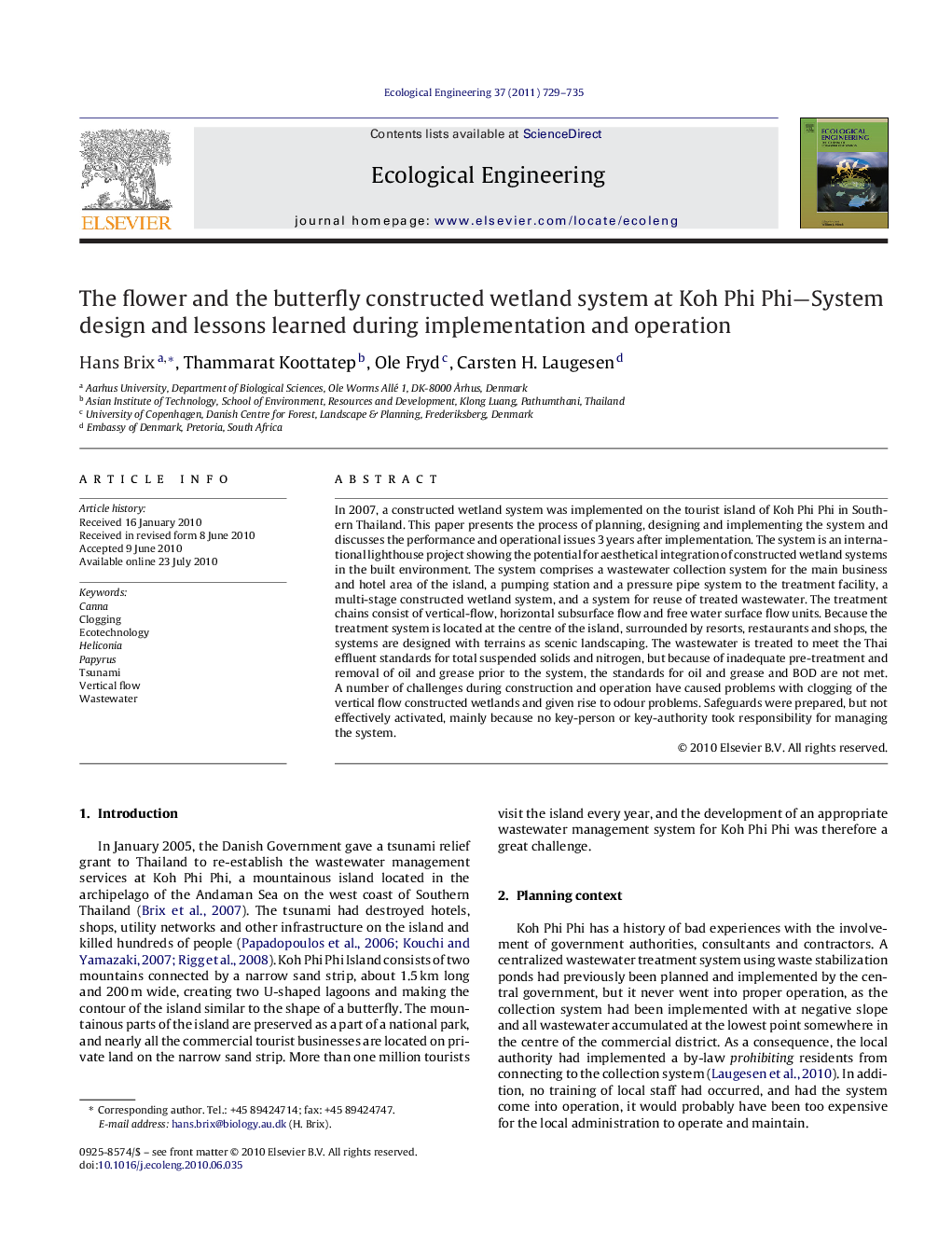| Article ID | Journal | Published Year | Pages | File Type |
|---|---|---|---|---|
| 4390189 | Ecological Engineering | 2011 | 7 Pages |
In 2007, a constructed wetland system was implemented on the tourist island of Koh Phi Phi in Southern Thailand. This paper presents the process of planning, designing and implementing the system and discusses the performance and operational issues 3 years after implementation. The system is an international lighthouse project showing the potential for aesthetical integration of constructed wetland systems in the built environment. The system comprises a wastewater collection system for the main business and hotel area of the island, a pumping station and a pressure pipe system to the treatment facility, a multi-stage constructed wetland system, and a system for reuse of treated wastewater. The treatment chains consist of vertical-flow, horizontal subsurface flow and free water surface flow units. Because the treatment system is located at the centre of the island, surrounded by resorts, restaurants and shops, the systems are designed with terrains as scenic landscaping. The wastewater is treated to meet the Thai effluent standards for total suspended solids and nitrogen, but because of inadequate pre-treatment and removal of oil and grease prior to the system, the standards for oil and grease and BOD are not met. A number of challenges during construction and operation have caused problems with clogging of the vertical flow constructed wetlands and given rise to odour problems. Safeguards were prepared, but not effectively activated, mainly because no key-person or key-authority took responsibility for managing the system.
